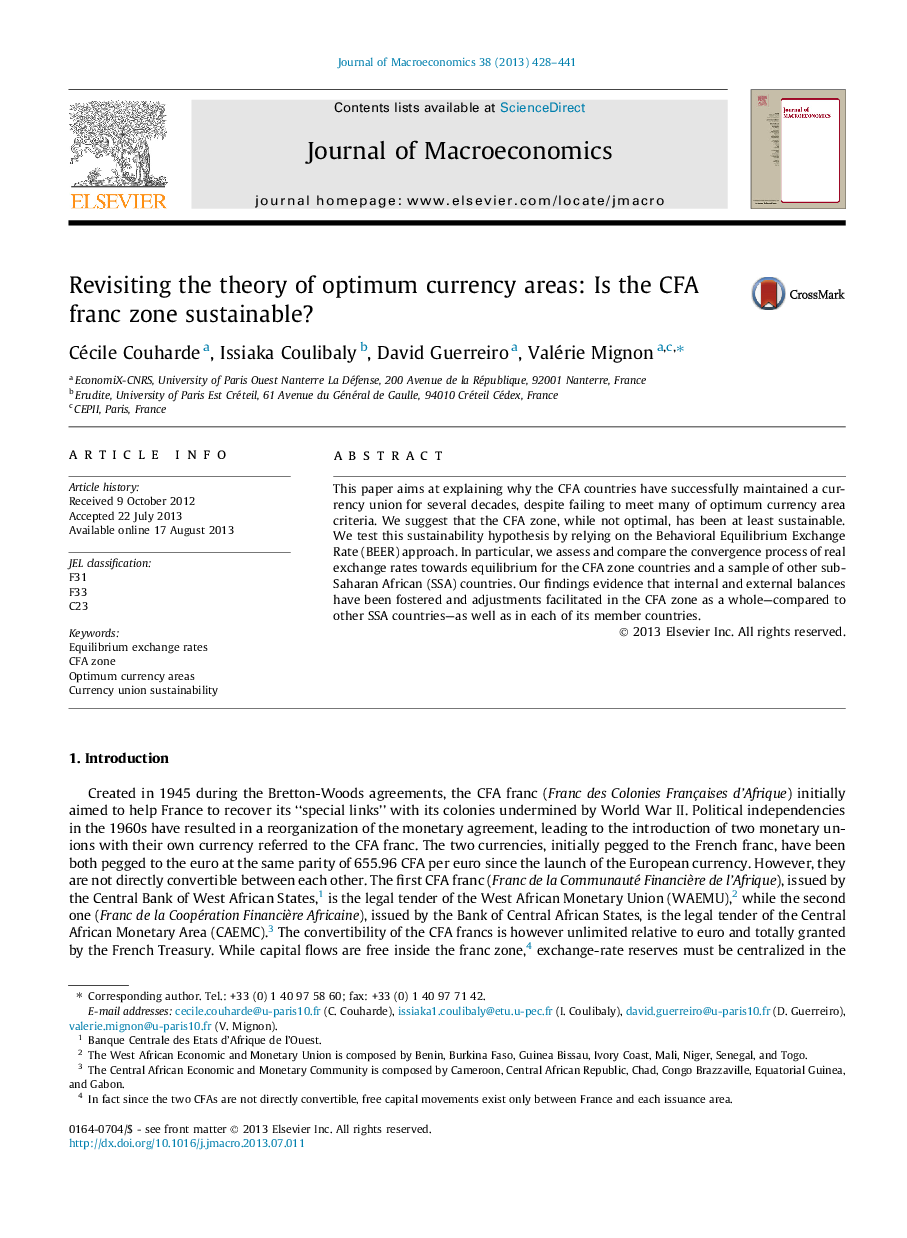| Article ID | Journal | Published Year | Pages | File Type |
|---|---|---|---|---|
| 965823 | Journal of Macroeconomics | 2013 | 14 Pages |
Abstract
This paper aims at explaining why the CFA countries have successfully maintained a currency union for several decades, despite failing to meet many of optimum currency area criteria. We suggest that the CFA zone, while not optimal, has been at least sustainable. We test this sustainability hypothesis by relying on the Behavioral Equilibrium Exchange Rate (BEER) approach. In particular, we assess and compare the convergence process of real exchange rates towards equilibrium for the CFA zone countries and a sample of other sub-Saharan African (SSA) countries. Our findings evidence that internal and external balances have been fostered and adjustments facilitated in the CFA zone as a whole-compared to other SSA countries-as well as in each of its member countries.
Related Topics
Social Sciences and Humanities
Economics, Econometrics and Finance
Economics and Econometrics
Authors
Cécile Couharde, Issiaka Coulibaly, David Guerreiro, Valérie Mignon,
